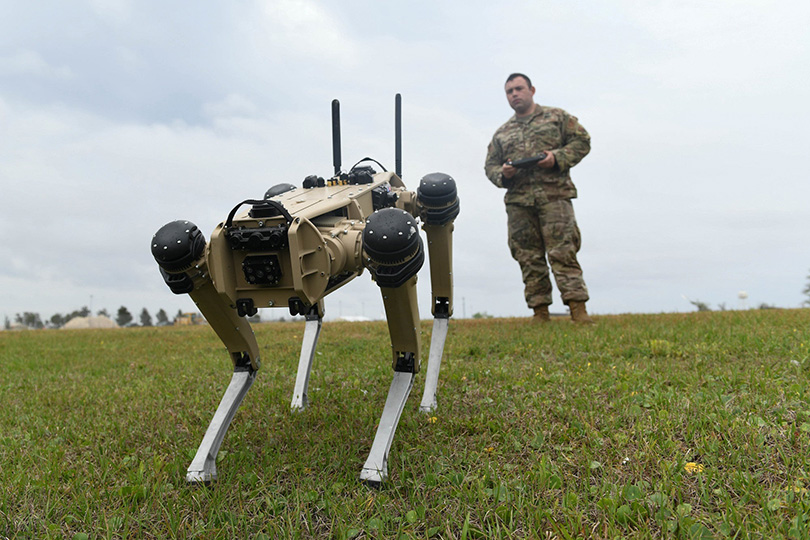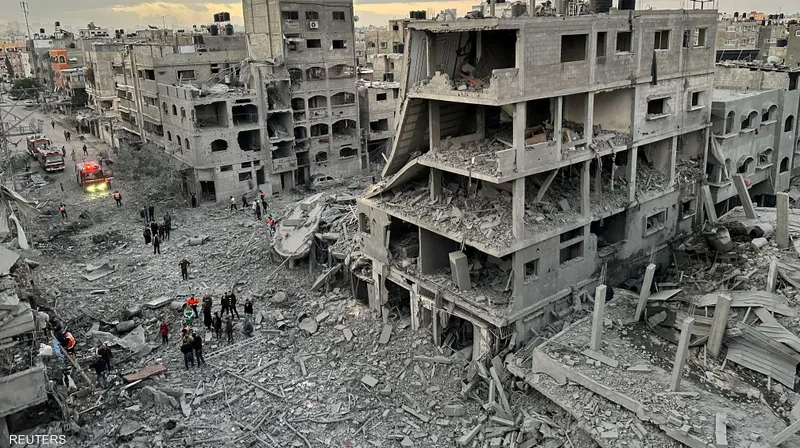
The Euro-Mediterranean Human Rights Monitor stated that the Israeli occupation army is using booby-trapped robots loaded with tons of explosives in the widespread destruction and killing operations carried out in northern Gaza.
It explained, in a statement Sunday, it “received numerous testimonies from inside Gaza, about the Israeli army’s use of booby-trapped robots and their detonation remotely, causing widespread damage to surrounding homes and buildings and great loss of life, at a time when the work of ambulance and civil defense crews is almost completely disrupted, except for a narrow range in some neighborhoods,” according to Quds Press.
“Israel’s use of booby-trapped robots is prohibited under international law, as these robots are considered random weapons that cannot be directed or their effects limited to military targets only,” the Euromed Monitor added.
It explained that “due to their nature, they directly hit civilians, or hit military targets, civilians or civilian objects indiscriminately. Therefore, they are prohibited weapons under international law, and their use in residential areas constitutes an international crime in and of itself.”
The statement quoted a Palestinian besieged in the “Al-Qassabi” neighborhood south of the “Jabalia” camp in the northern Gaza Strip, who said, “last Wednesday evening – 9 October – a huge explosion occurred in the Al-Qassabi neighborhood near where we were located.”
He added, “the sound of the explosion was very loud, I had never heard it so loud before, we have become able to distinguish between the sounds of explosions, so we know whether this sound is from bombing by aircraft, artillery or something else.”
He pointed out that “the sound of the explosion was many times louder than the sound of the airstrike, to the point that white dust covered the entire area. We later found out that this explosion was the result of a robot loaded with tons of explosives detonating, and that this robot destroyed about 6 or 7 houses at once. The occupation army detonates the robot in the houses without knowing whether there are civilians inside them or not.”
The Euro-Mediterranean Human Rights Monitor said that it documented the occupation army detonating two other robots in the “Tawam” area and in the “Zahraa” neighborhood adjacent to the Civil Defense west of the “Jabalia” camp, and another robot in the vicinity of the “Abu Ali Mustafa” intersection in “Bir al-Naja” in the western areas of the Jabalia camp.
Using “robots” to relieve pressure on the air force
military expert, engineer Muhammad Magharbeh, indicates that the “Israeli” air force “is going through its weakest stage,” considering that the occupation army’s resort to alternative destructive means to aerial bombardment is an important indicator of the challenges currently facing this weapon.
In an interview with Quds Press, he pointed out that the hundreds of thousands of tons dropped on Gaza during the year “are explosives resulting from bombs received from American ammunition stores, which are no longer able to meet the Israeli Air Force’s demands at the required speed.”
He also pointed out that Israeli Air Force air bases were damaged by the recent Iranian missile attack, in addition to “the great waste in using bombs on the Gaza and southern Lebanon fronts.”
He stressed that the Israeli Air Force faces “difficulty in carrying out full and effective air missions in its war with Hezbollah, difficulty in destroying tunnels at the expense of the scarcity of ammunition that it is forced to economize on, and the choice between using them for Iranian targets or destroying the Lebanese tunnels, or destroying the northern Gaza Strip to force the residents there to move to the south.”
Reports indicate that the Israeli occupation army consumed a large amount of ammunition in the early stages of its war on the Gaza Strip, specifically those used in aerial bombardment. During the first four months of the military operation, the Israeli Air Force bombed approximately 31,000 targets, 29,000 of which were in the Gaza Strip and the rest in other areas, most notably Lebanon.
According to a statement by the Israeli occupation army, the majority of these raids were carried out using fighter jets. The Israeli occupation forces, supported by the United States and Europe, continue to commit the crime of genocide in the Gaza Strip, for the 372nd consecutive day, by launching dozens of airstrikes and artillery shelling, while committing massacres against civilians, amid a catastrophic humanitarian situation resulting from the siege and the displacement of more than 95 percent of the population.











